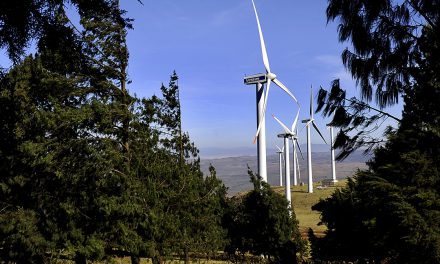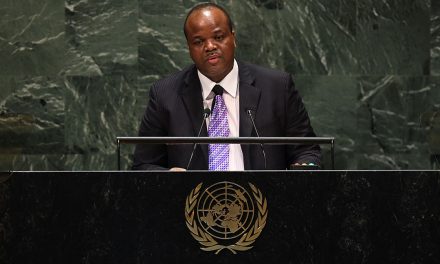Southern African nations are at it again. Nyasha Chingono reported in late May that those “hosting the largest elephant populations in the world made a fresh pitch…to be allowed to sell their $1bn ivory stockpiles”, purportedly to allocate it towards conservation. How they derive this figure is unclear, and the report doesn’t question its veracity. Current ivory prices are around US$400/kg in illicit markets in the East and averaging about $92/kg across Africa (except for Nigeria which has now become the continent’s major export hub).
Assuming away the problem of who exactly would buy this stockpile, these countries would need to sell about 10,000 tonnes (at $100/kg) to get US$1bn. If we assume that Zimbabwe, South Africa, Namibia, Angola, Botswana and Zambia have roughly 500 tonnes of legally stockpiled ivory between them, they could earn US$50m. This is 5% of the US$1 bn illusion. It would be difficult to imagine anyone buying the ivory. But even if they didn’t get it right, the risks to elephants from the bombastic rhetoric could be substantial.
The allure of ivory
Elephant ivory has always held some kind of romantic allure for human beings. The first book of Kings in the Bible describes Solomon’s extraordinary wealth and that he “made a great ivory throne and overlaid it with the finest gold”. This was just in his “House of the Forest of Lebanon”! We aren’t told where the ivory came from per se, but he had a fleet of ships which would deliver the ivory every three years, along with gold, silver, apes and peacocks. Ahab, a decidedly worse king than Solomon, built an entire house of ivory.
In his book Ivory, Keith Somerville describes how foreign ‘sports’ hunters came close to shooting the African elephant to extinction (for love of ivory) during the colonial era. When these same foreign hunters realised that their activity was unsustainable, they formed protected areas. What is now called ‘fortress conservation’ had its origins in removing indigenous people from land, and blocking their access to it, to create reserves that could sustain hunting activities.
The elephant poaching reality of 2006 to 2014
Beyond trophy hunting, the global ivory trade also drove mass slaughter of African elephants. Ivory from African forest elephants (a different species to savannah elephants) was particularly sought after because of its texture and amenability to specialised sculpting, mostly in the East. The forest elephant was declared ‘Critically Endangered’ by the International Union for the Conservation of Nature (IUCN) in 2021, five years after an assessment found that their numbers had plummeted to about 60,000. “The African Elephant Status Report 2016 estimated a continental population of 415, 428 for both African Savanna and African Forest Elephants combined and reported a continental decline of approximately 111,000 elephants since 2006.”
Prior to 2006, elephants had largely been managing alright, with significant population increases in some areas such as the Selous Reserve (now Nyerere National Park) in Tanzania. To stem the prior poaching tide, the Convention on International Trade in Endangered Species (CITES) had imposed a ban on international trade in ivory in 1989, which has caused major division among economists and conservationists. In a paper published by the American Economic Association in 2000, economists Kremer and Morcom acknowledge that the 1989 ban and a general “crackdown on poaching has been accompanied by decreases in the price of elephant tusks, as well as revival of the population”.
Unfortunately, CITES subsequently allowed two “one-off sales” – one in 1999 and another larger one in 2008. The latter appeared to be especially damaging, as China embraced ivory as a cultural heritage trade. Its large domestic ivory market grew uncomfortably alongside an international ban, which created a massive illicit international market. Poaching figures escalated rapidly between 2006 and 2014, with the Selous losing nearly 60,000 elephants alone during that time.
In a 2016 working paper published by the National Bureau of Economic Research, economists Hsiang and Sekar conclude that the 2008 one-off ivory sale had catastrophic effects – the “international announcement of the legal ivory sale corresponds with an abrupt ~66% increase in illegal ivory production across two continents, and a possible ten-fold increase in its trend.” Scientists David Lusseau and Phyllis Lee were more circumspect: “one-off ivory sales in 1999 and 2008 did nothing to halt elephant poaching.”
They concluded their 2016 analysis of whether ivory could be sustainably harvested by noting that “lifting the ivory ban will not address the current poaching challenge. We should instead focus on reducing consumer demand.” Professor Chris Alden and myself published a piece on Project Syndicate that same year arguing for complete decimation of ivory stockpiles in Africa for the same reasons: “stockpile destruction fortifies the credibility of demand reduction campaigns in East Asia, without which the poaching problem will never be solved.”
Many economists nonetheless argued that a legal trade was the answer to the poaching problem – that the one-off sales had failed because they created an artificial sense of scarcity, which caused panic buying and stockpiling. And southern African nations are still lobbying for this. In response, I published a paper in Politikon in 2016 arguing that the major risk of creating a legal ivory trade is that “if the sale of legally stockpiled ivory onto the market failed to reduce the price, and inadvertently expanded demand, species extinction could be quickened.”
Many economists disagree with me. They want the option to threaten the market with stockpiled tusks to drive down prices. The problem is that stockpiles are expensive to maintain, and officials (or their connections) often steal directly from them and smuggle the proceeds into illicit markets. Stockpile presence also sends a supply-side signal to the market that host countries are just waiting for the day when trade is again made legitimate. This may well incentivise speculative activity among organised criminal groups.
For this reason, and because China was contemplating a domestic ivory trade ban to complement the US ban imposed in 2015, and the global ban (in place since 1989), Professor Alden and I published a piece with Yushang Wu in Ecological Economics (2017). We argued that Chinese authorities should reverse their 2008 position and follow through with a domestic ivory trade ban: “Our game theoretic analysis suggests that the ban should be imposed indefinitely; this should be explicitly stipulated to avoid uncertainty and continued speculation. The introduction of any possibility of a future trade will create strong incentives for speculators to bank on elephant extinction and maximise poaching effort in the short run.”
To its credit, China implemented a comprehensive domestic trade ban in 2017, and elephant populations in southern Africa have remained largely stable since then, though poaching hotspots are being detected in some key areas like northern Botswana. Either way, the overall effect of credible domestic trade bans in the US and China, along with demand reduction campaigns, appear to have stemmed the tide of elephant losses, which numbered roughly 93,000 between 2007 and 2017.
UN wildlife crime report 2024
The United Nations Office for Drugs and Crime releases a wildlife report every four years. In the 2024 edition, the case study on ivory notes: “The World Wildlife Crime Report in 2020 presented evidence that the global ivory market was in decline during the period 2014-2018. It argued that this decline could have been the result of multiple factors, including the possible bursting of a speculative investment bubble after indications that legal ivory markets in several key countries were to be closed or sharply restricted.” This was exactly what we’d expected.
Researchers Lucy Vigne and Esmond Martin had found that raw elephant ivory prices had declined from about US$2,100/kg in early 2014 to US$1,100/kg in late 2015. A 10kg tusk went for roughly US$1,582/kg. “Besides the economic slowdown reducing sales in 2015, vendors attributed the crackdown in corruption as reducing sales of expensive ivory items used for gifts for officials, as well as the anti-ivory campaign that may have discouraged some from buying ivory.”
The UNODC report goes on to note that by 2018, wholesale prices were a third of what they had been in 2014. By 2021, an NGO in Viet Nam (now a primary destination market because of the displacement effect created by China’s ban) showed that prices had fallen to US$400/kg, which matched the average internal price within Africa between 2014 and 2018. Shipments from Tanzania and Kenya have dropped markedly due to high-impact law enforcement interventions pre-Covid, and the major source of seizures is now Nigeria. Syndicates are having to incur higher transport and detection-avoidance costs to ship ivory to market.
Ivory seizure data also seems to indicate an average decline in poaching since 2013. An upward blip in 2019 starkly contrasts a significant decline since 2020. However, the blip was attributable to three significant seizure events “which may possibly have come from stocks rather than fresh poaching”. Stockpiling is therefore still very concerning.
Nonetheless, the UNODC report rightly notes: “the shrinking of the ivory market documented by the collapse in the price of ivory, decreasing seizures of ivory, and decreasing elephant poaching figures, seems to be the result of a combination of demand and supply interventions… [a] supply constraint has not resulted in an increase in ivory prices, suggesting demand for ivory has truly declined. The fall in price may also have reduced incentives for speculative consolidation and storage of ivory for investment purposes to some extent.”
This is fairly rewarding. Our 2017 paper concluded that “De-valuation for speculators is arguably best achieved through simultaneous demand-reduction campaigns and indefinite domestic ivory trade bans. Targeting consumers is the best way to target speculators since speculators ultimately sell to consumers. Speculators will quickly assess whether a future market remains likely. Moreover, depending on the extent to which there is shared information among speculators, the policy hope is that the combination of demand reduction and a trade ban will lead to a fire sale – no speculator wants to be the last to sell; everyone would therefore sell as quickly as possible. This would lead to further price declines and remove the incentive for elephant poaching and trafficking.”
Flies in the ointment
The major risk to a decade of success is now a strong, coordinated push from southern African countries to pursue commodified wildlife conservation strategies under the banner of ‘sustainable use’.
Zimbabwe, for instance, has repeatedly signalled that it wants to be allowed to sell its ivory. Its elephant population is estimated at 65,028 according to the latest Kavango Zambezi (KAZA) Transfrontier Survey (2022). Journalist Takunda Mandura in 2023 stated that Zimbabwe has 100,000 elephants and “sits over a legal stockpile of ivory worth US$600 million.” An article from the previous year posits a figure of 136 metric tonnes in that stockpile. If Mandura expects US$600 million from 136 tonnes, he is literally expecting a price of US$4,411/kg, which is double the illicit market price in its 2014 prime. Who is going to pay Zimbabwe this kind of cash even if they do buy the ivory?
In the 2008 sale, Zimbabwe sold 3,755 kilograms for US$500,000. That amounts to US$133/kg, about 3% of what Zimbabwe currently seems to expect. Beyond the obvious propaganda in play, selling ivory to anybody risks an outward shift in the demand curve. It would undermine extensive and effective demand reduction efforts over the last decade. Syndicates would clamour to get their hands on the kind of stockpile and build up an illicit market again to drip-feed. In Zimbabwe, any money received seems unlikely to be channelled towards conservation, expensive as that is. Having said that, the stockpile currently costs roughly US$160,000 annually to maintain. That is cash that could contribute to genuine conservation efforts if stockpiles are destroyed, as they ought to be.
South Africa’s confusion
South Africa has repeatedly expressed solidarity with its regional peers on this issue, the latest of which is in the 2024 Reviewed National Biodiversity Strategy: “Develop and implement a strategy for a market for regulated domestic trade in high-end parts and derivates (e.g. rhino horn and elephant ivory) for local value-add enterprises based on processing and use of products.” The strategy notes that CITES does not currently allow an international trade in either rhino horn or elephant ivory. Nonetheless, it states that the country will likely work towards submitting a proposal to be allowed to trade “once conditions are favourable”. Until then, it will “explore domestic options for trade… for example, health clinics to administer traditional remedies using rhino horn for health tourists from the far East, or ivory carving being done locally for local sale and export for personal use.”
It is not clear how “favourable” is defined, but this is a clear statement of intent from the South African government. In its 2021 Draft Policy Position on the Conservation of and Ecologically Sustainable Use of Elephant, Lion, Leopard and Rhino, the government states that it “will not submit an ivory trade proposal to CITES as long as current specified circumstances prevail.” This is the same draft Policy Position that signalled a commitment to end the captive lion breeding trade. The 2024 strategy appears to be a rampant reversion to commodification under the ‘sustainable use’ banner, a throwback to the 2016 version of this strategy under the late Edna Molewa.
Trying to stimulate a domestic trade is playing with fire. Ignore, for a second, the unethical approach to exploiting culture to commodify rhino horn – there is no scientific evidence for the health benefits of rhino horn, and we have seen that legal domestic trades undermine international bans. This is precisely why the Chinese and US domestic ivory bans were so important. Their efforts, combined with demand reduction campaigns, drove down the perceived value of owning ivory. Moreover, domestic trade in rhino horn is currently permitted, but there is no demand. This is part of why John Hume ended up selling off his 2000-strong rhino herd recently.
When he tried to auction his horns in August 2017, it was a total flop. I wrote at the time: “While breeders are eager to defend their trade, economists have debunked the myth that a legal domestic market in rhino horns will conserve wild populations. Even if farmed supplies from South Africa satisfied a portion of the demand globally, it will not alter demand among consumers drawn to wild product, or those who are indifferent about the source. South Africa will most likely soon be home to parallel markets, with extensive laundering of illegal horn. That may be acceptable to breeders, but it defies reason for those trying to conserve wild rhinos.” My concerns remain.
As for ivory, the cost of maintaining stockpiles is higher than whatever revenue would be derived from stimulating a domestic market. It seems likely that a pseudo-trade would develop, where ivory is locally purchased from stockpiles and then sold on to middlemen, currently trafficking ivory predominantly through Nigeria. Prices on the Nigerian market have stayed relatively stable over the last few years at just below US$200/kg. Politically connected local players would simply become conduits for transporting legal ivory into illicit channels.
As Elizabeth Bennett put it in a seminal 2014 article, “With organised criminal enterprises involved along the whole commodity chain, corruption enables the laundering of illegal ivory into legal or potentially legal markets. Poachers and traffickers can rapidly pay their way out of trouble, so the financial incentives to break the law heavily outweigh those of abiding by it.” Why South Africa would actively want to contribute to this risk, and undermine much valuable work over the last decade, boggles the mind.
A good definition of mental health is “a radical commitment to reality”. Southern African authorities who think that they can earn US$1 billion from stockpiled ivory are imbibing some mind-altering economic ideology. It’s not only delusional, though; it’s also dangerous. It signals intent. Organised criminals will be watching the rhetoric and its results closely. The sooner South Africa and its neighbours destroyed their stockpiles, the better.
Dr Ross Harvey is a natural resource economist and policy analyst, and he has been dealing with governance issues in various forms across this sector since 2007. He has a PhD in economics from the University of Cape Town, and his thesis research focused on the political economy of oil and institutional development in Angola and Nigeria. While completing his PhD, Ross worked as a senior researcher on extractive industries and wildlife governance at the South African Institute of International Affairs (SAIIA), and in May 2019 became an independent conservation consultant. Ross’s task at GGA is to establish a non-renewable natural resources project (extractive industries) to ensure that the industry becomes genuinely sustainable and contributes to Africa achieving the Sustainable Development Goals (SDGs). Ross was appointed Director of Research and Programmes at GGA in May 2020.












